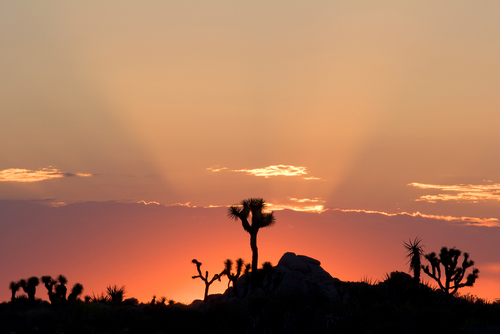Flu-Like 'Valley Fever' Increases in Arizona, California

A fungal infection called Valley Fever is on the rise in the Southwest United States, according to a new report.
There were more than 22,000 cases of Valley Fever reported in the Southwest in 2011, up from 2,265 cases in 1998, according to the report from the Centers for Disease Control and Prevention (CDC).
The report is based on cases in Arizona, California, Nevada, New Mexico and Utah; the fungus that causes the condition is also found in Texas, but infections there are not reported to the CDC.
Most cases (66 percent) occurred in Arizona, and that state also saw the biggest rise in occurrences, from about 1,500 in 1998 to more than 16,000 in 2011. California saw the second-largest increase in cases. Less than 1 percent of cases over the study period occurred in states where the fungus is not endemic.
The infection, formally called Coccidioidomycosis, is caused when people inhale the spores of the Coccidioides fungi, which live in the soil. The disease cannot spread from person to person.
"Because fungus particles spread through the air, it’s nearly impossible to completely avoid exposure to this fungus in these hardest-hit states," CDC director Dr. Tom Frieden said in a statement. "It’s important that people be aware of Valley Fever if they live in or have travelled to the southwest United States," he said.
People in endemic areas should consider trying to reduce exposure to dusty air, which might contain spores of the fungus, the report said.
Sign up for the Live Science daily newsletter now
Get the world’s most fascinating discoveries delivered straight to your inbox.
The respiratory infection causes flu-like symptoms, the report said. Valley Fever is rarely fatal, but it can be debilitating; nearly 75 percent of patients miss work or school, and more than 40 percent require hospitalization, according to the report.
It's not clear why cases of the infection are increasing, but it may be that changes in precipitation or temperature have increased spore dispersal, according to the report. Disruption of soil by construction might also be a contributing factor. Some changes in testing and reporting practices may also have played a role.
More research is needed to understand the reasons for the increase, the report said.
"Health care providers should be aware of this increasingly common infection when treating persons with influenza-like illness or pneumonia who live in or have traveled to endemic areas," the report said. Rates of Valley Fever were highest among people ages 60 and over.
Cases of Valley Fever might be "greatly underreported" the report said. Scientists have estimated that the fungus causes 15 to 29 percent of pneumonia cases in highly endemic areas; however, only a small proportion of patients with symptoms are tested for the disease.
The report used data collected from 1998 through 2011 by the National Notifiable Diseases Surveillance System.
Pass it on: Cases of Valley Fever are increasing in the Southwest.
Follow Karen Rowan @karenjrowan. Follow MyHealthNewsDaily @MyHealth_MHND, Facebook & Google+.










